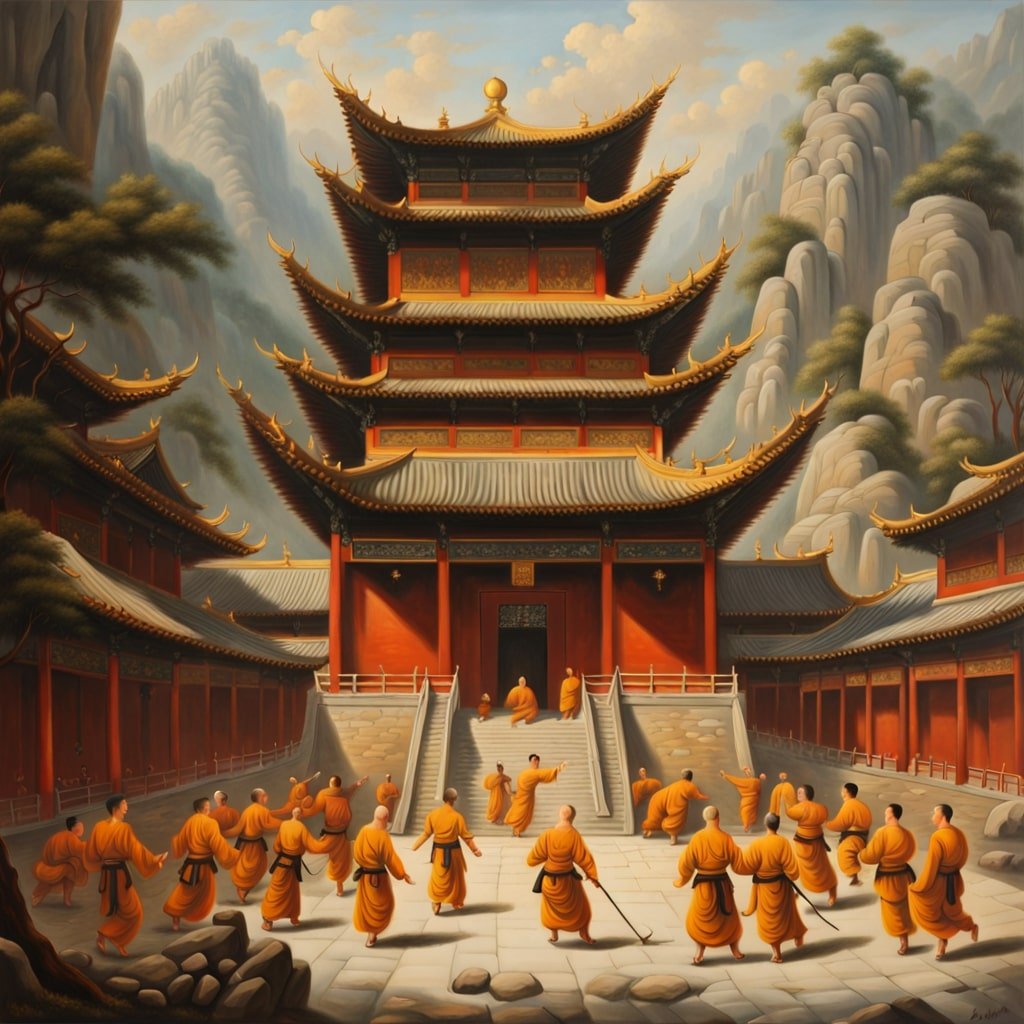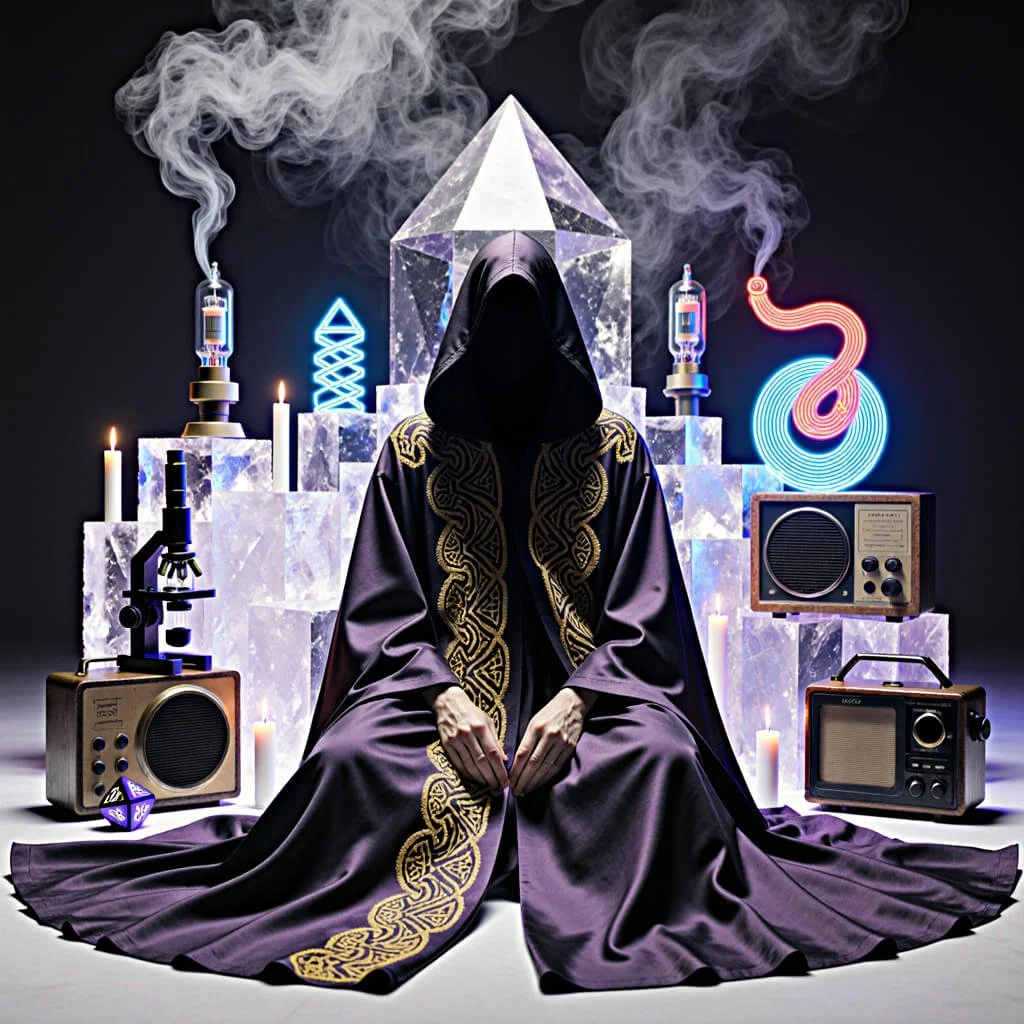The Esoteric Symbolism of Animals in Kung Fu
Awaken the archetypal animal energies within you through the ancient Chinese arts of Shaolin.
Summary:
Kung fu mimics animal movements to develop natural strength, speed, and skill. Practitioners emulate tiger, crane, mantis, and other styles.
Each animal has deep symbolic meaning representing spiritual attributes like courage, grace, fluidity, and ferocity.
By modeling animal essences, kung fu masters harmonize inner yin-yang energies and integrate latent human abilities.
Stories of legendary masters like Wong Fei Hung and Iron Arhat Li reveal how studying animal symbolism leads to self-mastery.
Kung fu's animal styles offer esoteric wisdom about the dance of elemental forces in the universe and within us all.
Legends of the Kung Fu Panda Master
Kung fu.
The resonant sounds of these Chinese characters conjure visions of powerful warriors and mystical sages amidst mist-veiled mountains.
This ancient practice lives through dynamic movement and cultivates stillness within.
It is an embodied bridge between human and nature.
Like the flowing rivers and gnarled pines of its homeland, kung fu shapes itself in harmony with an ever-changing environment.
Its stances shift like bamboo in the wind, adapting yet rooted.
Quick hands dart like dragonflies to strike or deflect, then slow like clouds drifting across the sky.
The scratches of cranes’ beaks and the rhythmic whip of tiger tails echo through kung fu’s forms.
Its practitioners move with the graceful neck of the crane, then lower a tiger’s claw stance, rooted yet agile.
The tiger fork or tiger trident was a traditional Chinese weapon used by Southern kung fu masters trained in the ferocious Tiger style.
Its metal prongs mimicked the shape of tiger claws, allowing practitioners to tear and grapple opponents with tiger-like motions. Sweeping and ripping techniques channeled the tiger's aggression.
Bodies conditioned through rigorous training display the attributes of animals, elements and topography.
Kung fu is a sensory immersion where eyes, ears, nose and skin drink in every sensation to feed responsive movement.
The rustling leaves, chirping birds and scent of morning dew in a misty forest shape the adept’s interactions with an opponent.
Fists become rocks, open palms clouds and fingers the rains of a storm.
This marriage of man and nature traces back thousands of years, etched into China’s mountains.
Generation upon generation refined kung fu alongside the country’s landscapes, wildlife and philosophy.
To understand kung fu is to reflect on human’s relationship with this environment.
Surreal Cosmic Images of the Cosmic Crane of Kung Fu
Kung Fu's Bestial Essence
The Tiger Stalks Through Bamboo - Ferocity and inner strength are the hallmarks of the tiger style. Practitioners like Wong Fei Hung embody the tiger's aggressive and powerful essence to dominate opponents.
The Crane Spreads Its Wings - Gracefulness and precision are the attributes of the crane style. Masters like Wong Fei Hung harness extended limbs and elegant footwork to strike with accuracy.
The Dragon Coils Through Water - Fluidity and sinuous power define the dragon style. Iron Arhat Li commands the dynamic dragon form, flowing seamlessly between techniques.
Legend of the Mantis Masters of Esoteric Animal Kung Fu
In Animal Attributes, Human Potential
Kung fu styles modeled on animals have profound meaning.
The tiger represents courage, the crane poise, and the dragon supple force.
By inhabiting animal movements, kung fu adepts integrate the deepest strengths of nature.
This animal symbolism reveals the creative potential within us all.
By exploring masters like Wong Fei Hung and Iron Arhat Li, we illuminate forgotten connections between man and nature.
We remember our inherent ability to move with animal grace.
This rediscovery has the power to transform us.
Kung fu's emulation of animals thus unlocks hidden wisdom for self-mastery.
Through this cultural lens, we deepen our relationship with the environment.
We rekindle our wildness within.
Dance of the Crane Princesses
Wong Fei Hung: Tiger and Crane Seek Balance
Among the lush forests and flowing rivers of China's Guangdong province, Wong Fei Hung grasped the essence of Hung Ga kung fu.
This potent style fused the tiger's ferocity with the crane's graceful precision through Tiger Crane Paired Form Boxing.
As a child, Wong wandered mist-veiled mountains learning from nature's power.
He observed how the tiger fiercely maintained domains while the crane effortlessly snatched fish. Through mimicking their movements, he embodied their attributes.
Wong practiced voracious tiger claw techniques on valley pine trees, leaving gashes in the bark.
His hands then glided into the sky, evading branches with delicate crane maneuvers.
By night, he heard tiger growls echo through bamboo forests reminding him to balance strength with poise.
When confronting foes, Wong moved like a stalking tiger.
His strikes landed with fury, Full of boldness, he dominated the space.
When pressed, he floated away using nimble crane footwork before countering with precision.
Through devoted training, Wong Fei Hung attained mastery of Hung Ga.
His Tiger Crane Paired Form became legendary for integrating animal essences seamlessly.
He spread this rare union of styles widely, influencing Southern kung fu's development.
Wong realized that wielding a tiger's imposing power required a crane's calm discipline.
He knew intuitively that borrowing nature's attributes brought balance.
His story illustrates how animal symbolism guided kung fu masters towards unlocking their greatest potential, integrating the full spectrum of their being.
Jade Princesses of Liquid Light
Fong Sai-Yuk: The Tiger's Roar Echoes in the Valley
Fong Sai-Yuk, the legendary "Tiger of Canton," moved with the strength and speed of his totem animal.
Myth told that at birth, a tiger's roar resonated from the mountains, heralding his greatness.
As a boy in Guangdong's sweeping hills, he mimicked stalking tigers, cultivating their fierce spirit.
Once during practice, Fong encountered a trapped tiger in the forests near his home.
Rather than fleeing, he sat peacefully before the great beast.
For seven days and nights he meditated, feeling their energies synchronize.
The tiger then peacefully departed, leaving with Fong the gift of its undying power.
When fighting, Fong roared with a tiger's commanding force, overwhelming enemies with relentless attacks.
His hands became tiger claws shredding through defenses. His knees landed with a tiger's weighted impact, nullifying resistance.
Though bold, Fong possessed a tiger's patience and stillness. He advanced with confident poise, bursting with concentrated energy.
The Tiger of Canton knew when to assert his supremacy through domineering might or withdraw stealthily out of reach.
Mastering the Tiger Fist granted Fong unequaled intensity balanced with wisdom.
His connection to the tiger's spirit gave him courage in times of peril, rallying his people against injustice.
The mythical tiger's roar at his birth foretold his ability to channel its primal potency.
Golden Dragon Essence
Iron Arhat Li: The Dragon's Fluid Force
In the fertile lands surrounding the Shaolin Temple, a young monk named Li became obsessed with developing an "iron body."
He allowed giant boulders to crush his abdomen and withstood iron cudgels without flinching.
After ten years of excruciating training, his flesh turned utterly resilient.
Iron Arhat Li then sought to complement his iron body with a fluid, dynamic spirit.
He turned to the mythical wisdoms of the dragon style.
Historically, kung fu featured two main branches of the Dragon style - the Northern Dragon and Southern Dragon.
The Northern school used lower wider stances and evasive footwork, while the Southern school had narrower stances and more rigid techniques.
Famous duels were fought between masters to prove dominance, but the styles remained distinct expressions of the mysterious dragon.
High in the misty peaks, Li visualized his body melding with clouds, water and wind. He moved with coiling power and sinuous grace.
Soon Li's iron body could flow seamlessly between solid rigidity and soft responsiveness, akin to clouds alternately condensing and dispersing.
He moved with the flowing combativeness of a river yet stood rooted like a mountain.
None could uproot him.
It was said Li's iron body could reflect arrows and shatter swords upon contact.
When grabbed, he became as slippery as an eel.
Opponents found grasping him akin to clutching running water in one's fists - futile.
In combat Iron Arhat Li struck with the fluid versatility of water yet stood firm as iron.
Having cultivated supreme physical resilience along with yielding redirection skills, none could defeat him.
His mastery of the Southern Dragon style was unmatched.
Li embodied the harmony between hardness and softness, stillness and dynamism.
His merging of the dragon's fluid attributes with an iron will created an indestructible fighter.
Truly a master of body and spirit.
Surrealist Mantis Kung Fu Oil Painting
Jee Sin Sim See: The Five Animals Form Yin and Yang
Jee Sin Sim See was one of the legendary Five Elders of Southern Shaolin, all masters of its diverse animal styles.
As a youth in China's Guangdong province, Jee Sin was frail, leading his parents to send him to train with the monks.
At the temple, he devoted himself to the five primary animal forms - Tiger, Crane, Leopard, Snake, and Dragon.
Jee Sin was renowned for his extreme arm and finger conditioning, said to have "arms like rafters and fingers like arrows."
His mantis techniques involved quick spear-hand jabs that mimicked the mantis' whipping strikes.
This stiff force was the counterpoint to softer styles in his Five Animals repertoire, creating a hard-soft balance.
Through arduous training, he cultivated each animal's strengths.
The tiger granted him courage, the crane precision, the leopard speed, the snake fluidity, and the dragon power.
Jee Sin learned to blend these animal essences to complement one another, forming a potent kung fu arsenal.
He wielded their attributes in combination or isolation, adjusting to overcome an opponent's weaknesses.
The Five Animals style's versatility established Southern Shaolin's reputation.
Jee Sin helped rebuild the temple after its destruction, spreading these kung fu secrets far and wide.
He taught how different animals modeled yin and yang, hard and soft.
Mastering the Five Animals gave Jee Sin balance of ferocity and restraint, thunder and lighting.
He could channel the tiger's devastation or the crane's gentle skill with equal mastery.
This exemplified the harmony attained by unifying diverse animal strengths.
Wang Zhengyi: Xingyi Mimics the Animals' Motions
In the mountains of Hebei province, Wang Zhengyi became obsessed with mastering Xingyi, an internal martial art emulating animal movements.
As a blacksmith's son, he fused his knowledge of metals with observing nature's essence.
Wang noticed how the tiger pounced in straight lines while snakes circled sinuously.
Eagles grabbed with talons as monkeys evaded using dexterity.
He incorporated the tactics into Xingyi's philosophy - aggressive yet elusive.
Rising before dawn, Wang practiced Xingyi sequences on mountain paths.
He stomped like a tiger pursuing prey, then shifted his weight like an eagle swooping on a target.
Flowing smoothly between postures, his movements reflected animals in their natural states.
Wang created twelve Xingyi routines modeled on the bear, eagle, tiger, monkey, chicken, swallow, snake, dragon, horse, alligator, hawk and lion.
Each mimicked its creature's quintessential motions from clawing to sweeping wings.
By inhabiting an animal's physicality, Wang gained intuitive insights into its energy and spirit.
Xingyi's 12 Animal Forms were created by renowned General Yue Fei as a structured way to teach martial arts.
According to legend, after Yue's father was killed, his mother taught him kung fu secretly by etching forms on his back.
He later created these Xingyi forms based on traditional fighting techniques.
His Xingyi forms thus encoded the combat essence of these creatures into an integrated system.
Wang spread his profound knowledge, making Xingyi widespread.
Through dedicated training and keen observation, Wang Zhengyi unlocked the secrets of animals' innate fighting abilities.
His Xingyi system shared this enlightenment, helping students actualize their own talents through emulating nature's perfect warriors.
The spear master Ma Xueli was known for his Monkey style Xingyi, full of evasive footwork.
In one famous duel, he faced Wang Zhengyi, who used clever stepping and turning dragon movements to avoid Ma's spear thrusts until he found an opening for attack.
This exemplified Xingyi's emphasis on evasion.
Weapons of the Animal Styles
The tiger fork with its pronged claws was perfect for Southern Tiger style grappling techniques.
Monks wielding the tiger fork could rip apart an enemy's defenses with its raking strikes.
For the Crane style, the crane's beak spear copied the bird's precise pecking motions.
Practitioners could stab weak points from a distance using crane-like stances. S
pinning and concealing moves evoked the crane's deceptive hunting.
The sinuous dragon's tail whip allowed fluid hitting and coiling movements embodying the dragon's flexible power.
Its length enhanced the dragon stylist's reach and unpredictable attacks.
Curved sabres were favored by Five Animal masters, as the broad blade mimicked an animal's slashing paw.
Varied grips provided options to slash, smash or hook opponents off balance.
The rope dart emulated the snake's quick strikes and wraps.
Wielders could send the blade darting out then whip it back unpredictably, keeping enemies at bay.
Its segments gave flowing mobility.
Animal style masters blended such weapons skills seamlessly into their bare hand forms.
The equipment enhanced their ability to channel legendary spirit creatures in combat.
Timeline of Animal Style Evolution:
500 AD - Shaolin Temple founded, early animal forms and Buddhist kung fu practices develop
1300s - Wang Zhengyi standardizes Xingyi 12 animal forms
1600s - Five Elders of Southern Shaolin, including Jee Sin Sim See, spread animal styles across China
1868 - Ma Xueli battles Wang Zhengyi in famous Xingyi duel, showcasing animal evasions
Late 1800s - Wong Fei Hung creates Tiger-Crane Double Form and fights Ten Tigers
1900s-present - Shaolin animal styles and legends continue influencing global martial arts evolution
Martial Arts Connections:
Kung fu pioneered the emulation of animal movements and spiritual attributes as fighting styles.
This influenced many Asian martial arts.
Karate katas contain many animal techniques - tiger claws, crane wings, dragon tails and snake flows.
The inspiration can be traced to kung fu origins.
Southern praying mantis kung fu directly evolved into various mantis-based martial arts practiced worldwide today.
Praying mantis conveyed fierce precision.
Filipino eskrima stick fighting employs motions mimicking the snake's fluid strikes.
Bruce Lee later incorporated elements of wing chun, a style related to snake forms.
Muay Thai's elbow strikes descende from the swinging blows of kung fu's tiger forms.
The strong linear attacks share common DNA.
Thus kung fu helped spark widespread interest in animal symbolism within martial practice.
Its legacy continues to inform living combat traditions.
The lineages remain alive.
Integrating Kung Fu Wisdom Into Daily Living
The animal styles of kung fu provide more than just fighting techniques - they offer guidance for living with purpose.
By looking to timeless symbols like the tiger, dragon and crane, we can transform our bodies, minds and spirits.
Physical Practice
Train your body with exercises that mimic animal movements.
Practice tiger claw stances to build strength.
Flow between cat stretches to cultivate flexibility.
Do bear walks to improve grounding. Set aside time each day to activate your inner zoo.
Additionally, perform kung fu sets using the characteristics of a specific creature. Move with the concentrated power of the tiger, the deft speed of the mantis, or the relaxed fluidity of the snake.
Let the essence of that animal guide your motions.
Mental Approach
Model your mindset and attitude on the archetypes symbolized by each animal.
In challenging situations, maintain the tiger's fierce resilience.
Against adversity, retain the patience and stillness of the crane waiting for the right moment.
Interact with others using the dragon's wisdom and compassion.
Create mantras based on animal attributes to repeat when needing inspiration. "The tiger's courage empowers me."
"I flow like the serpent around obstacles." Harness these primal strengths through focused intention.
Creative Expression
Explore your connection to nature and animals through creative mediums.
Write stories or poetry from an animal's perspective to gain insights into its worldview.
Paint images of yourself embodying different creatures. Sculpt clay models of animal guardians.
Incorporate animal symbolism into your wardrobe with tiger eye jewelery or dragon embroidered jackets.
Decorate your living space with murals, rugs or textiles featuring kung fu motifs.
Immerse yourself in environments that awaken your inner menagerie.
Growth Rituals
Design rituals aligned with specific animals to mark transitions or achieve growth goals.
On your birthday, perform five animal forms to celebrate aging with grace.
When starting a new endeavor, meditate on the tiger for empowerment.
Create ceremonies to reconnect with nature, guided by animals significant to you.
Venture into the wilderness and observe birds, as the legendary monk did when developing Crane style.
Contemplate your animal kinships.
By mindfully integrating kung fu's animal wisdoms into all facets of life, we nurture our potential.
The journey brings us closer to our true nature.
As we inhabit these archetypes, we rediscover ancestral roots in the wilderness within.
Under the Celestial Circle: Unlocking the Secrets of the Chinese Zodiac
High in the heavens, the 12 sacred animals of the Chinese zodiac dance in an eternal circle. Below on earth, their mystic symbolism has guided Chinese culture for millennia. This menagerie of mythic beasts weaves itself into the very fabric of society.
Each zodiac sign marks a year in the 12-year calendar cycle. The animals also represent archetypal attributes and energies believed to shape personality and destiny. By decoding their symbolism, the ancients sought harmony between human affairs and the cosmic rhythms above.
The Legendary Origins
According to legend, the Jade Emperor declared a contest to decide the zodiac's order.
The 12 animals raced across a river to reach him.
Their finishing rank became their position in the zodiac cycle.
The Ox crossed first, followed by Rat who hitched a ride then jumped ahead at the end. Next came Tiger, Rabbit, Dragon, Snake, Horse, Sheep, Monkey, Rooster, Dog then Pig.
Their place was sealed for eternity.
This folk tale highlights core traits of each animal.
The steady Ox, clever Rat, swift Horse, ponderous Pig.
Through myth, their natures were immortalized as guiding forces.
Animal Attributes
Each zodiac sign came to represent innate strengths, weaknesses, compatibilities and attributes:
Rat - Charming, quick-witted, resourceful
Ox - Strong, reliable, steadfast
Tiger - Brave, competitive, impulsive
Rabbit - Gracious, serene, cautious
Dragon - Charismatic, eccentric, irritable
Snake - Enigmatic, wise, vengeful
Horse - Active, independent, stubborn
Sheep - Sensitive, creative, indecisive
Monkey - Playful, mischievous, cunning
Rooster - Confident, organized, critical
Dog - Loyal, heroic, overly eager
Pig - Honest, happy-go-lucky, gullible
Through poetic metaphors, the zodiac animals allowed people to understand themselves and others. Your beastly birth sign was believed to shape your character.
Harmony Between Heaven and Earth
In imperial China, astrologers looked to the stars for guidance by interpreting zodiac energies.
The emperor himself followed the zodiac closely, making key decisions only after consulting the celestial omens.
By timing events and rituals to aligned with auspicious signs, they sought cosmic harmony.
This included everything from agricultural planning to dynastic marriages, ceremonies and burials.
The kingdom moved according to the dances above.
The zodiac’s 12 year cycle also governed social interactions.
Your animal year, month, day and hour of birth determined compatibility with others.
Following these intuitions promised prosperity.
Martial Arts Connections
Remarkably, the Chinese zodiac also influenced the development of kung fu. Animal styles like Tiger, Crane, Monkey and Snake echoed the symbols of the zodiac’s rotating menagerie.
Practitioners aimed to cultivate the virtues associated with each creature through training.
One born in the Year of the Tiger would be encouraged to develop courage and strength through Tiger Fist kung fu.
Masters regularly incorporated zodiac lore into their philosophies and teachings.
The celestial zodiac animals provided archetypes for combative, medicinal and spiritual cultivation alike.
By exploring these parallels, one uncovers a profound integration between ancient folk wisdom and Chinese culture.
Symbolism, cosmology, kinship - all reflected in both the earthly kung fu temple and heavenly zodiac.
Modern Applications
While its mystical roots run deep, the Chinese zodiac continues providing insight into personality and interpersonal dynamics today.
Around the world, people consult their zodiac sign to better understand themselves and others.
In this spirit, we can look to the dancing zodiac circle as a mandala symbolizing the cosmos's endless dance of archetypal energies.
By appreciating each animal's unique attributes, we gain wisdom applicable to navigating modern life's opportunities and challenges.
The ancient sky-gazers knew - the stars above mirror truths below.
We too can look to the beasts above as guides, just as those who came before did by the light of the eternal constellations.
The Esoteric Wisdom of Kung Fu's Animal Symbols
Kung fu's emulation of animals goes beyond just physical technique to encapsulate esoteric wisdom nurtured for millennia.
Animal styles provide a metaphysical lens for understanding oneself and the world.
At the core is the concept of humans possessing latent animal-like attributes.
These invisible potentials can be awakened through training driven by symbolism.
The tiger represents inner courage and determination, while the crane epitomizes poised discipline.
By molding oneself after an animal's essence, practitioners integrate its full spectrum of strengths.
This unlocks latent human abilities and restores balance.
As Wong Fei Hung showed, wedding tiger and crane brings together savagery and restraint.
Wong Fei Hung synthesized the Tiger and Crane styles into a potent hybrid form known as the Tiger-Crane Double Form.
It incorporated tiger claw strikes with crane spreading wings evasions seamlessly.
Folklore tells of the Legend of the Cavern of the Crane, where monk Yi Qui secluded himself in a cavern observing the dancing motions of cranes nearby.
Through meditating on their graceful footwork and precise pecking, he created the Crane style kung fu forms.
The style emphasizes elegant stances and snapping arm movements based on the cranes.
One legend told of Wong battling hundreds of axe and spear wielding martial arts students using this form during the clash known as Wong vs the Ten Tigers.
Additionally, animals serve as Taoist representations of elemental energies.
The dragon embodies swirling wind and water, lending fluid versatility.
The tiger channels focused fire energy for explosive power.
This cosmology offers mystical insight into the dance of yin-yang and five elements underlying reality.
Studying animal symbolism reveals patterns woven into the fabric of life itself.
A universe of esoteric wisdom is encoded into kung fu's bestial forms.
Through dedication and imagination, kung fu masters decode this knowledge for self-mastery.
The greatest understand that by harmonizing with nature's secrets, we achieve our true potential.
This is the sublime truth revealed by the animals.
Our Shared Animal Inheritance
Kung fu's animal styles offer profound teachings through their symbolism, far beyond fighting applications.
The legends of Wong Fei Hung, Fong Sai-Yuk and others reveal a pathway to self-actualization by unifying our inner attributes.
This journey of rediscovery never ends; the wisdom passed down invites continuous reinterpretation.
We must keep these folk stories alive through active embodiment and sharing.
At Ultra Unlimited, we carry on this living legacy of animal symbolism through multimedia content and experiential learning.
We bring these esoteric truths into the modern era through classes, workshops and groundbreaking virtual reality programs.
By creatively exploring kung fu's animal styles, we can transform global understanding.
People everywhere can rekindle their connection with nature and inner potential.
We can realize our shared spiritual heritage.
Join our community of innovators ready to immerse themselves in this ancient wellspring of wisdom through the lens of the modern world.
Help us honor these animal styles while evolving their meaning for today.
Let us unlock our collective greatness.
Explore our shop to explore a range of products inspired by the raw potency of the natural world.











































































